#Vancouver Jazz
Explore tagged Tumblr posts
Text
Come Hear the Naturals Play@Frankies Jan 3🌟
Hi There Wonderful People Third is a funny word now I look at it. Must be a truly ancient brit one methinks. Here I am holding the flute. amazing. next we’re in the pool. very very groovy indeed. however Nick the-nick-of-time Apivor(far left) is not on this one 😦he shall be missed) nice pic though had to keep him in. What a smile! It feels so amazing to be singing and playing again! I mean…

View On WordPress
0 notes
Text

#i chocked on my tea#LIKE EXCUSE ME#THATS A LITTLE ABSURD#like i get its designer and all that jazz#but jesus fucking christ 13k- FOR A JACKET?#not even the whole fit#i could understand for the fit#BUT 13k JUST FOR THE JACKET?#quinn hughes#vancouver canucks
35 notes
·
View notes
Text
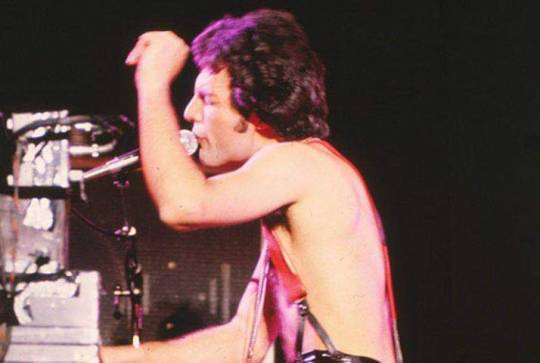
Today, on December 14th, 1978 - Queen Story!
Queen perform at the Pacific Coliseum, Vancouver, Canada, during 'Jazz Tour'
📸 Photo taken by Doug Bower
#vancouver#canada#1978#jazz tour#jazz album#freddie mercury#queen band#london#zanzibar#legend#queen#brian may#john deacon#freddiebulsara#roger taylor
24 notes
·
View notes
Text
André 3000's 'New Blue Sun' Vancouver Review
Highly anticipated ambient jazz show marks a new dawn but leaves fans ATLienated

Birdsong, crickets and rich ambient soundscapes echoed through the deep purples, rosy reds and starlit ceiling of the Queen Elizabeth Theatre in Vancouver on Friday October 11. The scene was perfectly set for a first glimpse at André 3000's highly anticipated 'New Blue Sun Live' Concert series, an unexpected leftfield step into instrumental ambient jazz from the seven-time grammy winning hip hop icon.
Warm up act serpentwithfeet created a suitably gentle atmosphere with kind-hearted crowd participation numbers and feel good R&B. Despite a few empty seats in the pit, likely a result of the high ticket pricing, the room was poised and curious to see how this drastic stylist shift would translate to the stage.
Origins, synergy and mystical synchronicity
The cosmic butterfly effect that led to the creation of André 3000's 'New Blue Sun' album has already become a tale of folklore. There have been countless stories of André, seemingly never to be found without some kind of wind instrument in hand, serenading unsuspecting Uber drivers and wandering the strip of his new home of Venice Beach like a nomadic jazz monk. It was one such encounter with legendary Californian music arranger and percussionist Carlos Niño in a Venice Beach grocery store that apparently sparked a creative partnership between the two that birthed the 'New Blue Sun's album project. Niño does admit that he had been keeping an eye out for André when he heard he'd moved to town but don't let the truth get in the way of a good story!
Before this reawakening, again mythically attributed to a Hawaiian ayahuasca trip (referenced in the album track 'That Night In Hawaii When I Turned Into A Panther And Started Making These Low Register Purring Tones That I Couldn't Control...Shit Was Weird'), André admitted that he had been suffering with creative block, social anxiety and a mounting sense of pressure to deliver something great in this next phase of his life. In a candid interview with hip hop mogul Rick Rubin on the 'Broken Record' podcast he sounded lost and fearful of his legacy. There was however a flicker of light in André's voice when he began speaking about his new meditative morning breathing routine, involving experimentation with an eclectic set of wind instruments.
Building anticipation - A deep, earthy and aesthetically engaging opening
The show began with a striking visual of a single white beam of light entering a prism just above what looked like a traffic cone before splitting into reds and greens in front of André, backed by his supporting musicians and six lights in a half-crest formation behind the stage. The lighting overall was dark and moody with André just about visible with his red jazz-elder beanie and glasses.
He was stood before a blanket that housed numerous flutes, whistles and other tools. To his right was keyboardist, and Alice Coltrane disciple, Surya Botofasina. At the back was the aforementioned Carlos Niño who seemed to set the tone with various percussion instruments, gongs, shakers and even plants which were a big source of inspiration for the album. To his left, composer and percussionist Deantoni Parks, responsible for the pulsing beat that surfaced through the evening.
The opening song built slowly with Carlos Niño employing various rattles, bushes and what looked like a slinky being swung above head at various points. André let out a mix of guttural and high pitched yelps and animalistic sounds in what felt like a Sun Ra-esque free jazz introduction. Some in the audience seemed bemused early on but for the most part the crowd was still on board and excited with yelps of approval in response to André.
After the first song, André reassuringly addressed the crowd with his southern charm and silky charisma. He introduced the band, cracked a few light jokes and explained the approach to the night - a purely improvised experiment and journey that we would all be embarking on together. It felt courageous and bold, in keeping with the album itself, but what was to follow unfortunately felt for the most part meandering, lacking cohesion and at times difficult to digest.
A brave pursuit but ATLienating for fans
There were some moments where it felt like the embers of an idea were burning but they were never fully formed or realized. A deep, dark primal drum beat from Deantoni Parks ultimately petered out. A lightsaber like hum and arpeggio riff from Surya Botofasina that felt like it could take things in a cosmic, electronic direction (adjacent to album track 'BuyPoloDisorder's Daughter Wears An André 3000 Shirt Embroidered') again pulsated and dropped out before ever taking hold.
Overall, there was a lack of melody, hooks, breaks or structure. There was no pattern, story or resolution to the jam-session musings. There were also no direct songs or distinct elements from the album that could be latched onto. Pure experimentation is a noble pursuit, but for a new group and an artist who is admittedly new to the instruments and finding his feet, it felt like a lot to take on.
At one point André began riffing in what sounded like an imitation of a primal language, which he jokingly admitted he had been making up on the spot. It was a funny moment, but a bit too close to the bone for someone attempting to communicate using instruments he wasn't necessarily fluent in.
It was hard to tell if the accomplished band were limited by André's range or if they were intentionally playing a supporting role but either way they were consigned to little more than background hushes, atmospheric flashes and ponderous patterns.
The final crescendo, albeit very charged, was particularly challenging and had the feel of a free jazz ayahuasca trip being led by an inexperienced astral traveler, with Andre finally slowing things down by breathing rhythmically into the microphone as the lights turned to blue.
New Blue Sun - A New Dawn for André 3000
I still love André 3000 and support this artistic change; the New Blue Sun album is fantastic and deserving of acclaim. This is undoubtedly the start of a process and an experimental phase for a long term project, but the current iteration felt ill equipped for such an ambitious undertaking. Despite the dark mood lighting, the stage left nowhere to hide. In the end, there was a limp standing ovation but no calls for an encore.
This felt like a harsh reset, a journey of purification teetering on the edge of a bad trip, but cleansing for what will hopefully now be futile ground for one of our generations true shining stars. The New Blue Sun is rising, but the cold light of day can be harsh.
2 notes
·
View notes
Text
New Age Doom - There Is No End - making good on the genre contradiction in their name while throwing in folk and free jazz as well (!)
Critically-acclaimed experimental band New Age Doom has teamed up with Norwegian indie singer Tuva Hellum Marschhäuser, known as Tuvaband, to create There Is No End, an original collab album releasing on October 27, 2023 through We Are Busy Bodies. This record showcases New Age Doom's evolution towards a more melodic direction while retaining their signature freewheeling chaos. Co-producers Eric J. Breitenbach and Greg Valou worked with Tuva and a range of new and returning collaborators to craft a record of profound sonic contrasts. Tuva's ethereal vocals elevate New Age Doom's genre-bending, densely-layered sound with lyrical themes about rebirth, emergence from the underground, living fearlessly, and the subjective nature of time. Tuva Hellum Marschhäuser - Voice Eric J. Breitenbach - Drums, Gong Greg Valou - Guitars (Baritone, Quartertone), 5-String Bass, Percussion, Macedonian Tambura, Saz, Voice Tim Lefebvre - Upright Bass, Electric Bass, Synths Benedicte Pierleoni - Drums CrookOne -Drum Machines, Samples Dan Rosenboom - Quartertone Trumpet Cola Wars - Pocket Piano, Organ, Synths, Maxrophone, Piano Gavin Templeton - Saxophones (Baritone, Tenor, Alto, Soprano), Flute, Duduk, Clarinet
#Bandcamp#New Age Doom#vancouver#Tuva Hellum Marschhäuser#2023#folk#jazz#doom#noise#dark ambient#doomjazz#prog rock#female vocal
13 notes
·
View notes
Text
Just ordered from my favorite vegan fried chicken place at 2am after seeing a midnight drag show, living in a big city like Vancouver is so nice 🔥
3 notes
·
View notes
Photo
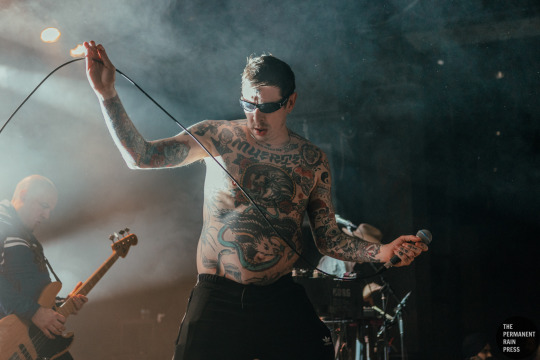


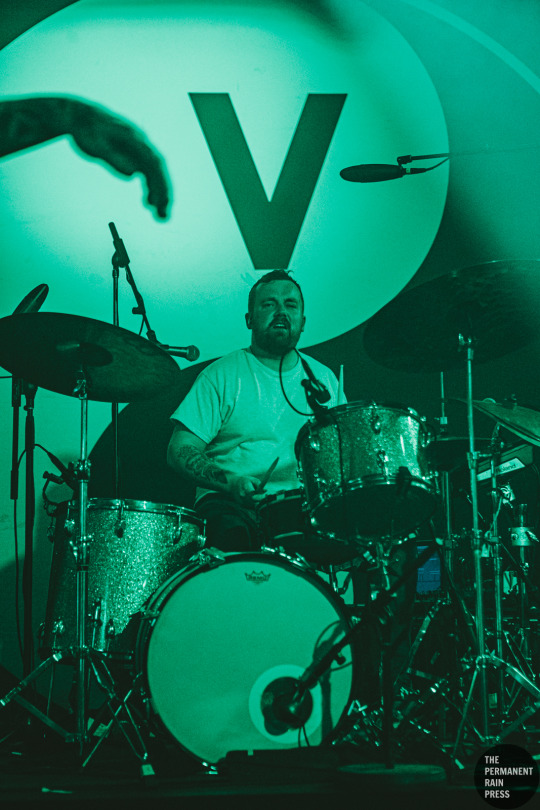

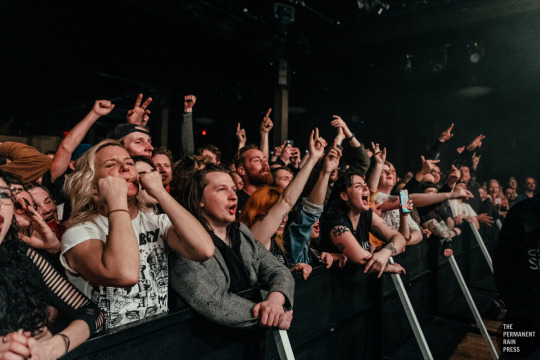

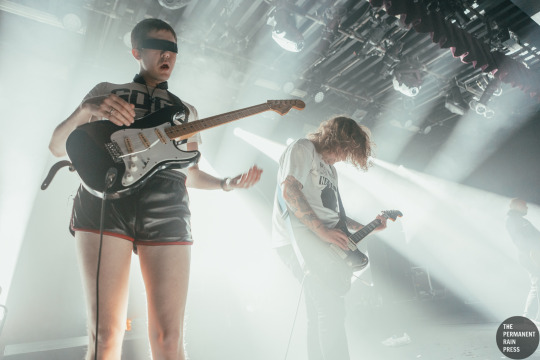


Gallery: Viagra Boys @ Commodore Ballroom - Vancouver, BC Date: March 2, 2023 Photographed by: Ray Maichin
#PRphoto#Music#live music#Ray#Ray Maichin#Viagra Boys#Timbre Concerts#Commodore Ballroom#Vancouver#yvr#Sebastian Murphy#Henrik Höckert#Elias Jungqvist#Linus Hillborg#Commodore#Cave World#Welfare Jazz#Street Worms#Call of the Wild#Consistency of Energy#Punk Rock Loser#Ain't Nice#Ain't No Thief#Troglodyte#Baby Criminal#concert#concert photography#concert photos#gig#YEAR0001
21 notes
·
View notes
Text
I only consider myself Canadian when I post this gif as a reaction to American Democrats.

#otherwise I am a simply from BC#Metro Vancouver#all that jazz#The Lower Mainland#personal post#we need a new provincial name
5 notes
·
View notes
Text

Darius Jones - fLuXkit Vancouver (i̶t̶s̶ suite but sacred), 2023
2 notes
·
View notes
Text
[PHOTOS] Norah Jones @ Queen Elizabeth Theatre

Shots by Jacob Zinn









#norah jones#come away with me#pop#jazz#ravi shankar#don't know why#queen elizabeth theatre#vancouver#sunrise
1 note
·
View note
Text
"Canadian critics of popular culture were able to turn to American experts for the necessary “science” to back their protests about the young generation’s “dance-o-mania.” Among the most fear-inspiring of these was a widely circulated tract by Dr. R.A. Adams, self-proclaimed “author, editor, lecturer on Higher Eugenics, Sex Hygiene Prophylactics and Social Economics.” Adams declared that “the devil chose well” in making the dance “one of his surest, truest and most potent instruments of destruction . . . of the bodies, minds, lives and souls, of men and women.” Here was an instrument that not only would ruin the present generation but, “by means of Heredity, Pre-natal Influence and Defective Environment,” would pass its degenerative effects to future generations. Devoting the better part of several hundred pages to the immorality of modern dance, vehemently sustained by racist condemnation of the “Negro” origins of the “habit,” he continually conflated its health repercussions with its implications for the souls of white Christian youth.
Such moralizing about dancing was by no means the exclusive domain of experts and clerics. If sex were not its principal attraction to the young, asked one dance-foe from Whitby, Ontario,
why is it when the sexes are segregated, the dance, with all its supposed benefits, becomes as dead as the proverbial door nail? Eliminate the sex instinct and you strip the dance of all its thrills.
Commentary, both bemused and alarmed, singled out such dance fads as the codfish cuddle,
named doubtless because no one but a fish would make bold to attempt it. . . . It is an opportunity, hitherto undreamed of, for the transfer of rouge that would make any pale young man glow. . . . The til-death-do-us-part grasp is used, also mincing steps that take the dancer nowhere in particular.
The “devotees” of the dance, being “in the flower of their youth,” considered eccentricity their greatest triumph, and “so they [went] on dancing themselves to perdition.” The fact that young dancers kept pace to the “uncivilized” and “primitive” strains and “mad rhythms” of jazz and other “Negro” music was equally objectionable to many observers. The earliest jazz musicians on the Canadian scene were American performers appearing on the vaudeville circuit in the mid- to late 1910s. Canadian musicians, as much as young music-lovers, quickly took up this cultural import. Jazz historians date the music’s commercial beginnings in Canada to about 1917, at which point recordings of the music and the growth of commercial dance halls fuelled its popularity. The jazz phenomenon was further facilitated during the 1920s by radio broadcasting, the cheap cost of producing records, and rising radio and gramophone ownership. Already in 1922, the American magazine Photoplay was reporting that the eighteen-to-thirty age group accounted for 48 per cent of all phonograph and record purchases, although making up only 23 per cent of the U.S. population. In an evolutionary process hinging on youthful tastes and the youth market, the music industry increasingly responded to these with music and dance styles aimed directly at them and purposely distinguishing the new generational style from the old—jazz, the “crooners” of the late 1930s, the Big Band sound, swing jive, and ultimately the revolutionary “youth sound” of the 1950s, rock ’n’ roll.
The unrestrained, free-form, highly improvised syncopated rhythms of jazz signified the music of the modern age, and consequently of modern youth. Because the Great War drew away many of the nation’s seasoned musicians, the development of jazz in Canadian cities, according to musicologist Mark Miller, was accelerated as they were replaced in the dance halls by “younger men with the newer ideas of a generation maturing under the formative influence of jazz, a music that offered their youthful energies full release.” Among the best known of the early Canadian jazz bands was the Winnipeg Jazz Babies, who came together during that city’s tumultuous spring of 1919, amidst the General Strike. The band was composed of seven teenage boys, the oldest only eighteen. They were regular performers at the city’s Manitoba and Alhambra dance halls and earned wider renown through tours across the western provinces. Montreal, with a growing community of single black men, many of them Americans imported to work for the railway, became the contemporary hotbed of Canadian jazz, although many of the “white” clubs in the city, as across the continent, would not hire black or “mixed” bands. The Catholic Church in Quebec railed mightily against the wicked implications of jazz and dance for a devout, traditional, francophone society. The Vancouver Sun’s music critic called jazz and the shimmy the “twin sisters of corruption.” In an even more extreme—and racist— response, one letter-writer to that newspaper pronounced it “n*gger trash,” exposing his resentment that this “vulgar music” was all that “the average Vancouver dancing audience . . . care to hear.” While roused to panic over dancing, jazz, and the dance hall itself, the commentators were not, as was often the case, entirely misinterpreting the situation, even as they exaggerated the dangers to youth. During this period, the dance hall came to be a favoured stage for young people experimenting with a thrilling new generational style which served to define their own personal style their personal “aura,” as the marketers of sex appeal called it—with due attention to appearance, technique, and attraction of the opposite sex. For contemporary youth-watchers, this very style became the visual symbol of troubling emergent attitudes toward leisure, sexuality, and personal fulfilment. Modern “dance hall girls” were surrendering to the odious flapper influence, and not only in their manner of dressing: more important, “the very clothing worn is an indication of the character and the ideals which are actuating our growing girls.” The gauzy, strappy, short-skirted flapper costume bore witness to “a degradation in the minds of young women suggestive of a return to animal instinct and opposed to the dictates of what we are pleased to call civilization.” The “risks” taken by immodestly dressed girls were quite simply “enough to make a mother’s heart stop.” But the boyish look of the day—deliberately downplaying traditional conventions of feminine beauty, freeing up both preparation time and physical movement—was a special generational marker for young women. For the first time in history, youth was setting the fashion pace. Age, class, gender, and race, however, weighted even the flimsiest of mass-produced items of fashion with different social meanings. Along with other elements of style such as smoking, drinking, and “loose” attitudes toward fun and sex—if not necessarily loose behaviour—dress and coiffure signified the thoroughly modern girl. Yet much of the flouting of gender-defined middle-class convention remained at this level of the symbolic. Very real restrictions on women’s lives persisted, especially for girls still largely dependent on their families.
For the anti-dance set, the ideal was “adequate philanthropic or civic provision for the normal demand for rhythm and music in recreation.” Until this noble objective was realized, public regulation of the commercial dance hall, by means of licensing to establish hours of operation and ages of admittance, was critical. But “the thing that would really alter” the situation was supervision by a chaperone who was “doing it because of her motives and not for the money entailed.” The chaperone would have “control of the dances” and “of correct methods of dancing,” clearly intended in the moral and not the performative sense of correctness. But despite a great many determined resolutions by the Council on Child and Family Welfare and a variety of other interested groups, progress in regulating public dance halls as “a menace to the physical and moral life of youth” was slow, piecemeal, and largely ineffectual. Requiring public halls to be registered, licensed, and inspected by provincial governments at least kept them under watch, a surveillance that could be extended through municipal bylaws, which were often more stringent in their requirements. In Ottawa, the two dance halls that existed in 1929 were licensed by both city and province, with the municipality prohibiting the admittance of “any unescorted woman.” They were also chaperoned and obliged to close at midnight. Kitchener and Galt, Ontario, each hired a policewoman expressly to keep an eye on “moral conditions” in and around the towns’ dance halls. But Guelph residents lamented that no provision was made in its three dance halls “to prevent, say, a drunken man from annoying girls. . . . There is no paid chaperone, there is not even a ‘chucker-out.’”
- Cynthia Comacchio, The Dominion of Youth: Adolescence and the Making of Modern Canada, 1920-1950. Waterloo: Wilfred Laurier University Press, 2006. p. 173-176.
#youth in revolt#dance halls#invention of adolescence#dance craze#jazz#disciplining youth#racism in canada#history of canadian youth#montreal#vancouver#winnipeg#great depression in canada#academic quote#reading 2024#winnipeg general strike
0 notes
Text
Join us at the Silk Purse October 10 🌟
Heloo Fans of Sound! Please join us for an inspiring morning concert Tuesday October 10 @ 10:30 am. Tickets are $24. https://westvanartscouncil.ca/classical

View On WordPress
1 note
·
View note
Text

2024 Vancouver International Jazz Festival x Granville Island. (via Matt Taylor)
Jazz lovers, get ready to kick off summer by heading to the 39th edition of [VIJF] at various indoor and outdoor venues across the city [...]. Once again featuring a mix of free and ticketed performances, 2024’s ten-day festival promises a wide array of jazz programming with plenty of choices for concertgoers to choose from.
Live performances from June 21–30.
#yvr#media#events#vancouver#vancity#granville island#british columbia#lower mainland#jazz#festival#jazz festival#jazz fest#downtown vancouver
0 notes
Text
BADBADNOTGOOD @ Venue

BADBADNOTGOOD @ Venue - Vancouver, BC August 12th, 2014
While at the time of these photos they were relatively unknown, they are now arguably the most influential jazz group of the past decade. The Toronto trio made a stop to Vancouver’s Venue Nightclub for their "I Get High" tour. Sabota, with local DJs Flipout and Rhek opened for the night.













Photos & Review: Steven
1 note
·
View note
Text
What's Good March 20 Edition
Vancouver Events and Happenings to Plan For It’s been a while since we’ve done our weekly roundups, but we’re ramping them up as things are back full-on in person. Does anyone else feel that there is something interesting every night? Here are a few things on our radar. Painted Ship open in Kitsilano Now open at 2884 West Broadway this neighbourhood pub hosts live music, makes great drinks, and…

View On WordPress
0 notes
Text
Tickets are on sale for the return of the Vancouver International Jazz Festival
In the wake of news of other festival cancellations, The Vancouver International Jazz Festival, is planning its 38th edition to make a return to stages around the city. From Friday, June 23 to Sunday, July 2, Coastal Jazz & Blues Society is offering a selection of 140+ free and ticketed performances, kicking off with free Downtown Jazz concert outside the Vancouver Art Gallery and closing Canada Day long weekend at venues around Granville Island. Ticketed events already announced and on sale include performances by Sun Ra Arkestra, performing live as part of Granville Island Jazz on June 24 at Performance Works, marking a return to the live-stage after 10 years. GRAMMY-winning vocalist Arooj Aftab, Vijay Iyer, Shahzad Ismaily performing as their new project Love in Exile on June 26 and American Jazz quartet The Bad Plus on June 27 planned for the Vancouver Playhouse. GRAMMY award-winning trumpeter Chris Botti, takes the Queen Elizabeth Stage on June 28, at 7:30pm, followed by a performance by two-time GRAMMY award-winning instrumental band BADBADNOTGOOD on June 29, 2023, at 7:30pm. More performances will be announced in the weeks to come.
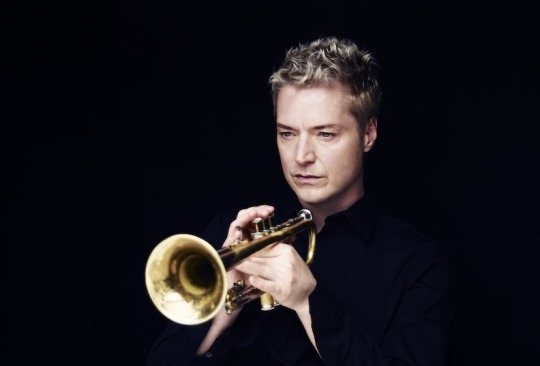
Chris Botti plays Vancouver International Jazz Festival June 28th at The Queen Elizabeth Theatre - Photo: Fabrizio Ferri Like other festivals and event producers, the Coastal Jazz & Blues Society has had to continually adapt in the face of challenges since the start of the pandemic. This year, the organization has had to consider rising site infrastructure and artist touring costs, as well as a previous title sponsor relationship coming to a close in 2022 due to changing priorities. As a result, this year, Coastal Jazz has opted for a smaller, more sustainable festival. “This year will look a little different for the Vancouver International Jazz Festival,” says Nina Horvath, Coastal Jazz & Blues Society Executive Director. “But what stays the same is our festival programming. We’re working hard to bring local, Canadian and International artists to Vancouver, introducing some new music and hosting past favourites. We’re announcing new shows and schedules over the next few months, and we encourage you all to come out and support live music.” Tickets for Sun Ra Arkestra go on sale to the public today March 16th with other performances already on sale now at coastaljazz.ca
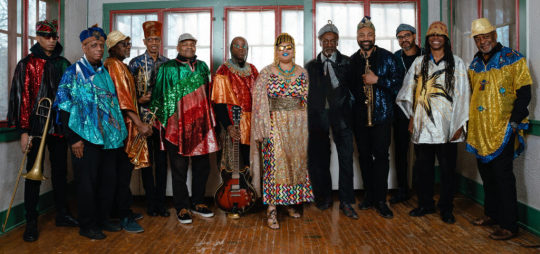
Sun Ra Arkestra, led by Marshall Allen, plays Vancouver International Jazz Festival June 24th at Performance Works. Photo: Jamie Kelter Davis Read the full article
#ArtGallery#BADBADNOTGOOD#bands#ChrisBotti#concerts#free#GranvilleIsland#jazz#JazzFest#Musicians#performers#QueenElizabeth#SunRaArkestra#tickets#vancouver#VancouverInternationalJazzFestival
0 notes